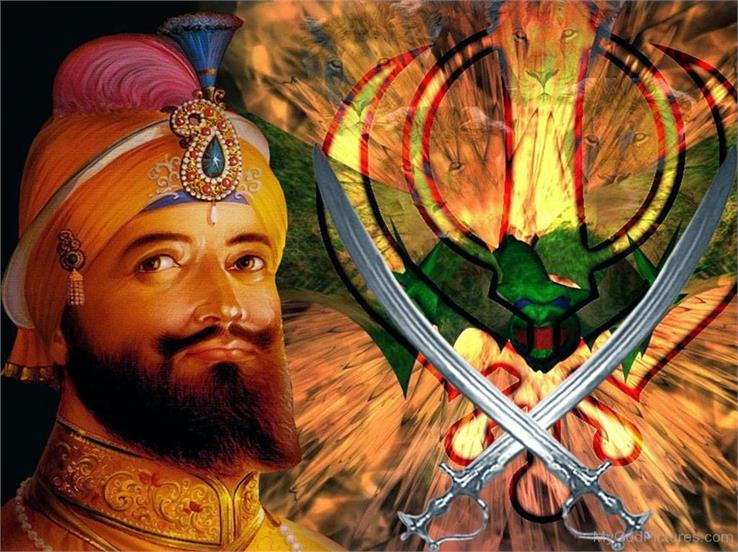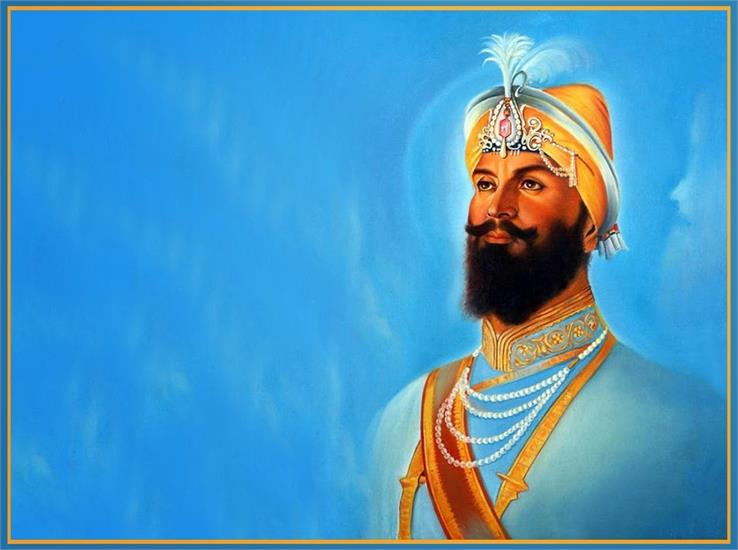Guru Gobind Singh Jayanti
The birth celebration of Guru Gobind Singh Ji is celebrated as 'Guru Gobind Jayanti.' On this auspicious occasion, People belonging to the Sikh religion commemorate the day with great pomp and show. On this day, Kirtan is performed and Langars are organized in homes and Gurudwaras.
When a person hears the name of Guru Gobind Singh Ji, only one interpretation comes to his mind - Saint Soldier, which means "Sant-Sipahi"
Facts
Name: Guru Gobind Singh
Birth Date: 22 December 1666
Birth Place: Patna Bihar, India
Significance: 10th Guru of Sikhism, Founder of Khalsa Panth.
Brief Introduction
The birth name of Guru Gobind Singh Ji was Gobind Rai. A symbol of valor and courage, Guru Gobind Singh Ji was born on 22 December 1666 in Patna, Bihar. His father's name was Guru Tegh Bahadur Ji and his mother's name was Mata Gujri Ji. The first four years of his childhood were spent in Patna. Then in the year 1670, his family moved to Punjab. The name of his place of birth is known today as "Takht Shri Patna Harimandar Sahib."
Nearly two years later, the family of Guru Gobind Singh resided in the Nanak Chak (Anandpur Sahib) in the Shivalik Hills of the Himalayas. He learned elementary education, language knowledge, and martial arts at this place. After Growing up, Guru Gobind Singh followed the footsteps of his father and protected Kashmiri Hindus from the tyrannical Mughal ruler Aurangzeb. Guru Gobind Singh fought in different wars with the Mughals and their Sahyogi kingdoms for about 14 years.
Special Qualities of Guru Gobind Singh
"Guru Gobind Singh Ji was a unique confluence of devotion and power."
Sharing spiritual joy among the common people, teaching morality lessons, awakening the fearful and scared people to become fearless and mighty were the qualities of Guru Gobind Singh. Guru Gobind Singh was an idol of peace, forgiveness, and tolerance. He had acquired knowledge of Sanskrit, Punjabi, Persian, and Arabic languages. Guru Gobind Singh had a blue horse. He was also a theorist, an excellent poet, and had a special interest in music. Dilruba is a musical instrument, which was invented by Guru Gobind Singh. Dilruba is a modified version of "Taus" which was invented earlier by Guru Hargobind Ji, the sixth Guru of Sikhs.
When & How did Gobind Singh become the tenth Guru of Sikhs?
Guru Tegh Bahadur Ji i.e., Guru Gobind Singh's father was the 9th Guru of Sikhism. When the Kashmiri Pandits were being forced to convert to Islam, Guru Tegh Bahadur Ji strongly opposed it and protected the Hindus. He himself refused to accept Islam. For this reason, he was beheaded by the King of India Aurangzeb in the Chandni Chowk extension. After this incident, his son Guru Gobind Singh was appointed as the tenth Guru of the Sikhs.
Guru Gobind Singh Ji was only nine years old when he held the title of 10th Guru of Sikhs on 11 November 1675.
The word "Khalsa"
The word Khalsa means purity. Only a person committed to social service by the mind, word, and deed can call himself Khalsa Panth. Guru Gobind Singh founded the Khalsa Panth in 1699. A Khalsa speech by him was established and at the same time, he established the basic principles of Khalsa Panth.
"Waheguru Ji Da Khalsa Waheguru Ji Di Fateh"
Five required articles of Sikh faith which are known as "5 Kakara" are mentioned below:
- Never cut your hair.
- Wearing a wooden comb which is considered a symbol of cleanliness.
- Always wear Kara (Steel Bangle) in hand, which is a symbol of the Sikh religion, culture, loyalty, unity, and faith in god.
- Wearing knee-length underwear, which teaches them to control their sexual desire.
- To keep the Kirpan (short sword to protect the poor and needy people).
Guru Gobind Singh Ji prepared some rules for the Khalsa warrior which are mentioned in Hukamnama. Some of them are:
- They can never eat tobacco.
- They cannot eat sacrificed meat.
- Never drink alcohol.
- Make an honest living.
- Donate his tenth share of his earnings.
Major Battles
It is said that Guru Gobind Singh fought a total of fourteen wars but never detained or damaged the people of any place of worship.
- Battle of Bhangani (1688)
- Battle of Nadaun (1691)
- Battle of Guler (1696)
- First Battle of Anandpur (1700)
- Battle of Anandpur Sahib (1701)
- Battle of Nirmohgarh (1702)
- Battle of Basoli (1702)
- Battle of Anandpur (1704)
- Battle of Sarsa (1704)
- Battle of Chamkaur (1704)
- Battle of Muktsar (1705)
Major compositions
- Jap Sahib
- Akal Ustat
- Bachittar Natak
- Zafarnama
- Khalsa Mahima
The final accompaniment of Guru Gobind Singh
At the last stage of his life journey, Guru Gobind Singh called Sangat and installed the Sikh religious book Guru Granth Sahib on the throne of the Sikh Guru. Moreover, said that now no more living person will sit on this throne. He taught the Sikh society to help the oppressed and always conduct decent behavior.
Then he said that -
"In the coming times, the Sikh society has to seek guidance and inspiration from the holy book Guru Granth Sahib."
In this way, Guru Gobind Singh became the last living Guru of the Sikh society.
Later, Guru Ji dedicated himself to create a new chapter of Adi Granth, which has been compiled by the fifth Sikh Guru Arjan Dev Ji.
He has created a collection of his writings called Dasam Granth and his own autobiography named Bachitar Natak.
Death of family
It is said that the Muslim governor of Sirhind seized Guru Gobind Singh's mother and two sons (younger ones). When both of his sons refused to accept the religion of Islam, they were buried alive.
Unable to bear the grief of the death of her grandchildren, Mother Gujri too did not live long and die soon. Both of his elder sons died in 1704 while fighting with the Mughal army. When Guru Gobind Singh Ji saw that the Mughal army had fought in the wrong way and brutally murdered his sons, instead of giving up, Guru Gobind Singh issued a letter "Zafarnama" to Aurangzeb.
Death of Guru Gobind Singh
Guru Gobind Singh Ji breathed his last on 7 October 1708 at Nanded Sahib, Maharashtra. Guru Ji had a lifespan of 42 years.
When Aurangzeb died, Bahadur Shah became the next king of India. Guru Gobind Singh also helped to get him the throne. For the same reason, their relationship was friendly. Stunned by the friendship of Bahadur Shah and Guru Gobind Singh, Nawab Wajid Khan of Sirhind hired two Pathans who killed Guru Gobind Singh by deceit. One of the two killers of Guru Gobind Singh was killed by his own dagger. Also, the other was killed by the Sikh group. Dagger's sharp blows on the Guru's heart led to his death.
The Journey of Guru Gobind Singh
Guru Gobind Singh compiled the teachings of all Sikh Gurus and stored them in the Guru Granth Sahib book and completed it. Guru Gobind Singh also started the tradition of adding the word Singh with the name of male Sikhs and Kaur with ladies belonging to the Sikh religion. Guru Gobind Singh respected people of all religions, caste and always helped them when needed. At the age of only nine, Guru Gobind Singh inspired his father Guru Tegh Bahadur to protect and sacrifice for Kashmiri Hindus.









